Fishes
Media

Species Types
Scientific Name
Noturus flavus
Description
The stonecat is the most common madtom in the large streams in the northern Ozarks and Prairie region. Its body and fins are nearly plain, its upper jaw projects beyond the lower jaw, and its lower lip and chin lack dark pigment.
Media
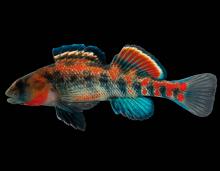
Species Types
Scientific Name
Etheostoma, Percina, Ammocrypta, and Crystallaria spp.
Description
Darters have been described as the hummingbirds of the fish world: colorful, small, and quick. Missouri has about 44 different types of darters. They are most diverse in the fast, clear, rocky streams of the Ozarks.
Media
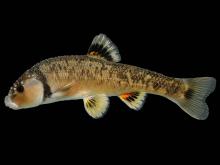
Species Types
Scientific Name
Campostoma anomalum (syn. C. pullum)
Description
The central stoneroller is a brownish minnow with small eyes. The lower jaw has a flat, shelflike extension used to scrape algae from rocks. Found statewide, it is most active during the daytime.
Media
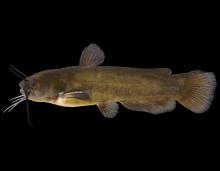
Species Types
Scientific Name
Ameiurus natalis
Description
The yellow bullhead is widespread in Missouri. It is the most common bullhead catfish in the Ozarks and Bootheel lowlands. It has white chin barbels, and the edge of its tail fin is straight, not notched.
Media
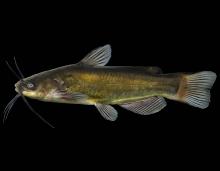
Species Types
Scientific Name
Ameiurus melas
Description
The black bullhead is widespread in Missouri. It is the most common bullhead catfish in north and west portions of the state. It has dusky or black chin barbels, and the edge of its tail fin is notched, not straight.
Media
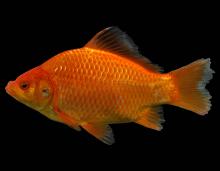
Species Types
Scientific Name
Carassius auratus
Description
Goldfish are not native to North America. They often escape into the wild from bait buckets and other causes, but there are few self-sustaining populations in Missouri.
Media
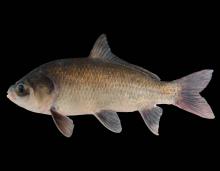
Species Types
Scientific Name
Ictiobus cyprinellus
Description
Missouri's largest sucker, the bigmouth buffalo occurs over much of the state and is most abundant in the Missouri River and its larger tributaries to the north.
Media

Species Types
Scientific Name
Cyprinus carpio
Description
The common carp is a "whopper" member of the minnow family. Originally from Asia, it was actively stocked in America in the 1800s and was firmly established in Missouri by 1895.
Media
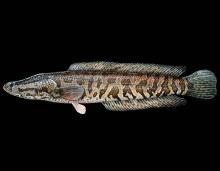
Species Types
Scientific Name
Channa argus and other Channa and Parachanna spp.
Description
Snakeheads are native to Asia and invasive in America. They resemble bowfins and can live in similar habitats. Note the extended anal fin and the pelvic fins located close to the pectoral fins and gills.
Media
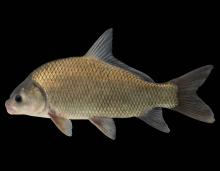
Species Types
Scientific Name
Ictiobus bulbalus
Description
The smallmouth buffalo is nearly as common and widespread in Missouri as the bigmouth buffalo. Identify it by its small, nearly horizontal mouth and the strongly keeled forward part of its back.
See Also


Media

Species Types
Scientific Name
Amphiuma tridactylum
Description
The three-toed amphiuma is an eel-like, completely aquatic salamander. It has very small forelimbs and hind limbs, each with three tiny toes. In Missouri it’s found only in the Bootheel region.
Media

Species Types
Scientific Name
Siren intermedia nettingi
Description
The western lesser siren is an eel-like, aquatic salamander with external gills, small eyes, small forelimbs with four toes, and no hind limbs. In Missouri, it’s found mostly in the Bootheel and northward in counties near the Mississippi River.
About Fishes in Missouri
Missouri has more than 200 kinds of fish, more than are found in most neighboring states. Fishes live in water, breathe with gills, and have fins instead of legs. Most are covered with scales. Most fish in Missouri “look” like fish and could never be confused with anything else. True, lampreys and eels have snakelike bodies — but they also have fins and smooth, slimy skin, which snakes do not.





















